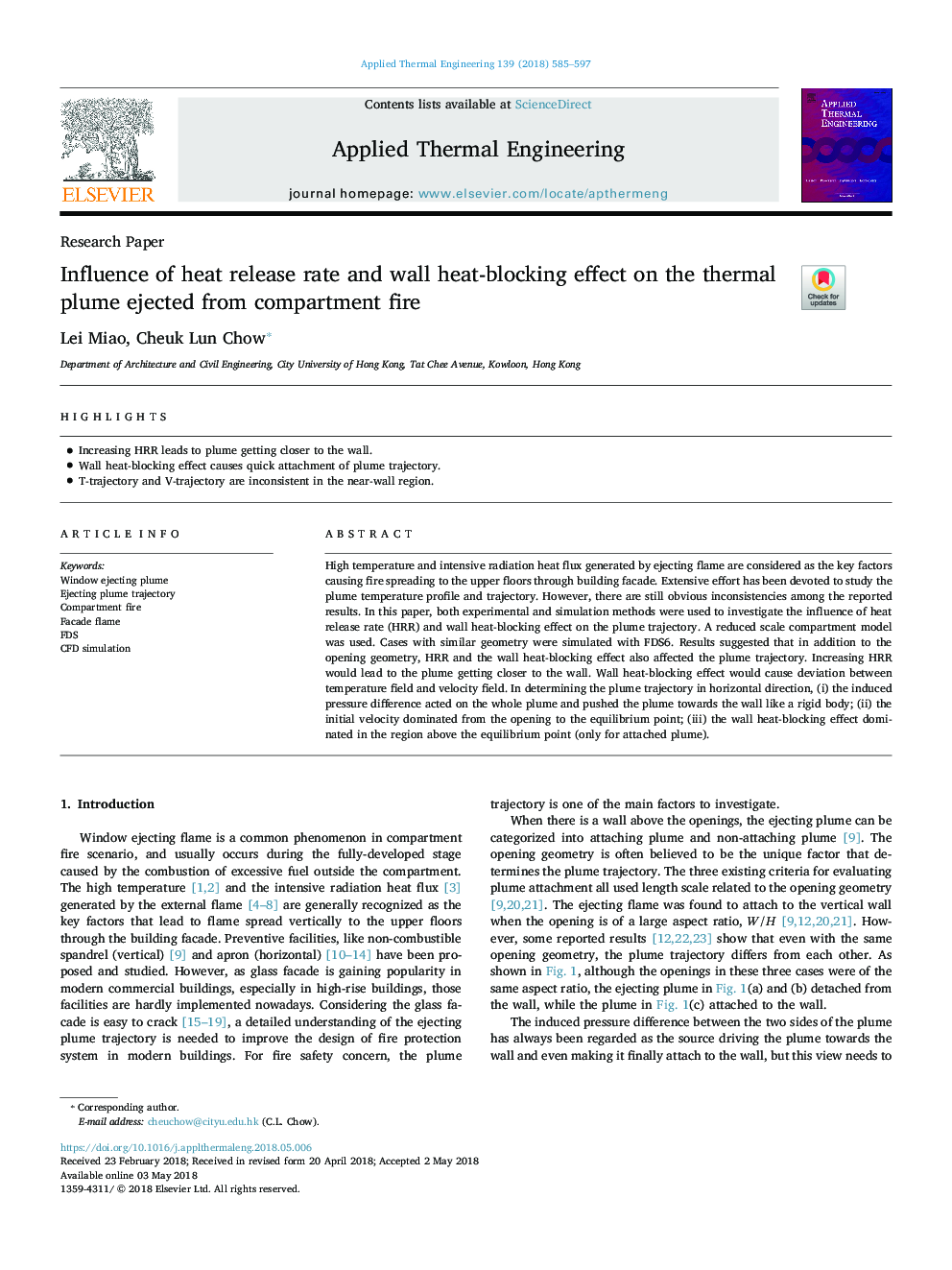| Article ID | Journal | Published Year | Pages | File Type |
|---|---|---|---|---|
| 7045188 | Applied Thermal Engineering | 2018 | 13 Pages |
Abstract
High temperature and intensive radiation heat flux generated by ejecting flame are considered as the key factors causing fire spreading to the upper floors through building facade. Extensive effort has been devoted to study the plume temperature profile and trajectory. However, there are still obvious inconsistencies among the reported results. In this paper, both experimental and simulation methods were used to investigate the influence of heat release rate (HRR) and wall heat-blocking effect on the plume trajectory. A reduced scale compartment model was used. Cases with similar geometry were simulated with FDS6. Results suggested that in addition to the opening geometry, HRR and the wall heat-blocking effect also affected the plume trajectory. Increasing HRR would lead to the plume getting closer to the wall. Wall heat-blocking effect would cause deviation between temperature field and velocity field. In determining the plume trajectory in horizontal direction, (i) the induced pressure difference acted on the whole plume and pushed the plume towards the wall like a rigid body; (ii) the initial velocity dominated from the opening to the equilibrium point; (iii) the wall heat-blocking effect dominated in the region above the equilibrium point (only for attached plume).
Keywords
Related Topics
Physical Sciences and Engineering
Chemical Engineering
Fluid Flow and Transfer Processes
Authors
Lei Miao, Cheuk Lun Chow,
